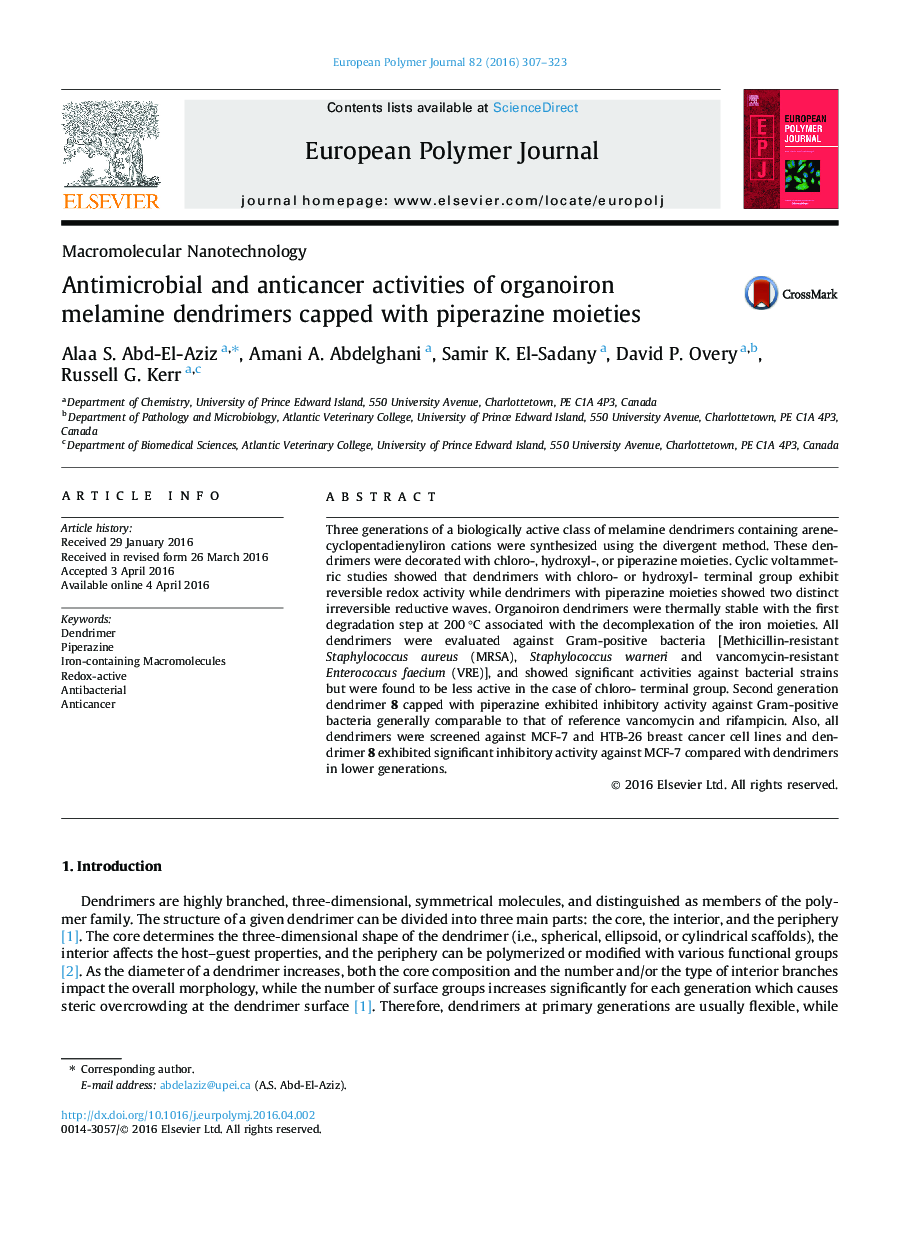| Article ID | Journal | Published Year | Pages | File Type |
|---|---|---|---|---|
| 1399134 | European Polymer Journal | 2016 | 17 Pages |
•Melamine organoiron dendrimers exhibited biological activities against bacteria and cancer targets.•A significant increase in dendrimer effect with increasing dendrimer generations.•The second generation capped with piperazine exhibited inhibitory activities comparable to the reference.
Three generations of a biologically active class of melamine dendrimers containing arene- cyclopentadienyliron cations were synthesized using the divergent method. These dendrimers were decorated with chloro-, hydroxyl-, or piperazine moieties. Cyclic voltammetric studies showed that dendrimers with chloro- or hydroxyl- terminal group exhibit reversible redox activity while dendrimers with piperazine moieties showed two distinct irreversible reductive waves. Organoiron dendrimers were thermally stable with the first degradation step at 200 °C associated with the decomplexation of the iron moieties. All dendrimers were evaluated against Gram-positive bacteria [Methicillin-resistant Staphylococcus aureus (MRSA), Staphylococcus warneri and vancomycin-resistant Enterococcus faecium (VRE)], and showed significant activities against bacterial strains but were found to be less active in the case of chloro- terminal group. Second generation dendrimer 8 capped with piperazine exhibited inhibitory activity against Gram-positive bacteria generally comparable to that of reference vancomycin and rifampicin. Also, all dendrimers were screened against MCF-7 and HTB-26 breast cancer cell lines and dendrimer 8 exhibited significant inhibitory activity against MCF-7 compared with dendrimers in lower generations.
Graphical abstractThree generations of bioactive melamine dendrimers containing organoiron moieties were successfully synthesized. Several end groups such as chloro-, hydroxyl-, or piperazine were used to efficiently functionalize the designed dendrimers. All dendrimers showed bioactivity, especially second generation capped with piperazine dendrimer 8, which showed inhibitory activity with IC50 of 0.9 ± 0.1 μM against Gram-positive bacteria [Methicillin-resistant Staphylococcus aureus (MRSA)] which is generally comparable to that of reference vancomycin and rifampicin. In addition, a significant increase in the anticancer activity has been observed by increasing dendrimer size.Figure optionsDownload full-size imageDownload as PowerPoint slide
